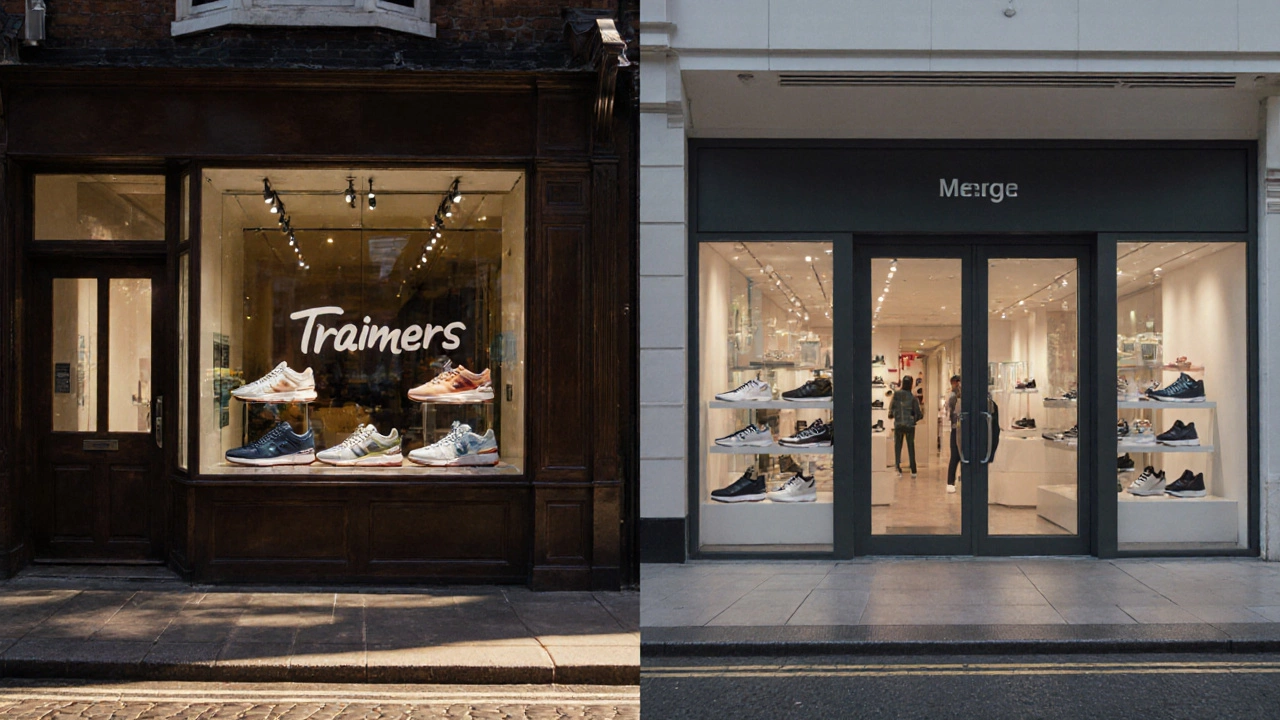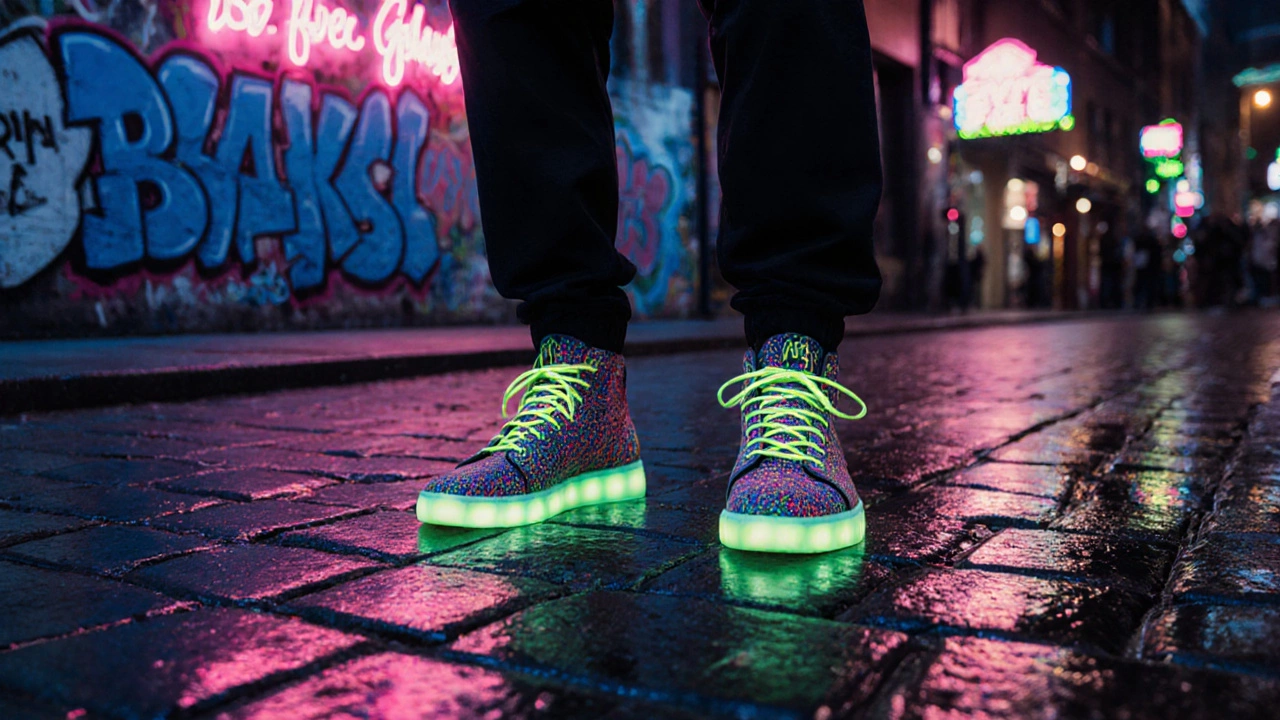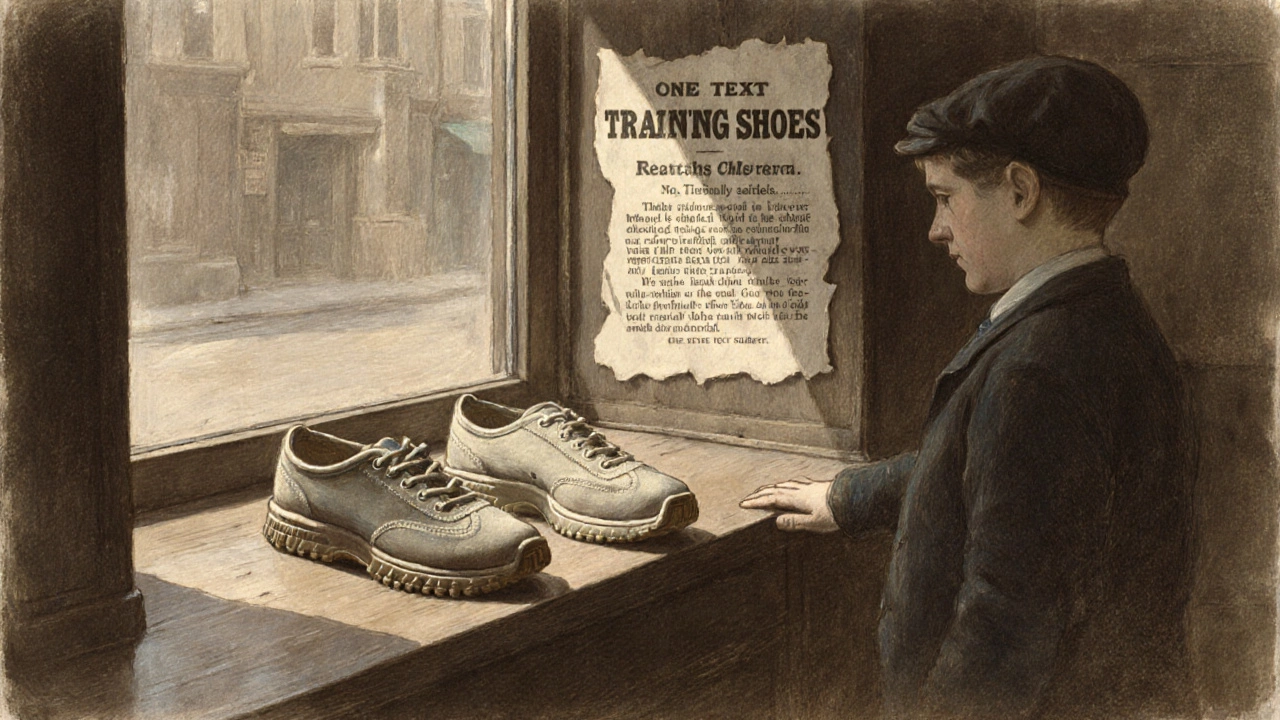Quick Takeaways
- ‘Trainer’ comes from the idea of a shoe used for training or sport.
- The term appeared in the UK in the late 19th century, while ‘sneaker’ grew in the US around the same time.
- Both words refer to the same type of athletic shoe, but each carries cultural baggage.
- British usage is tied to specific brands and sub‑cultures, especially football and streetwear.
- Knowing when to say ‘trainers’ or ‘sneakers’ helps you sound natural on both sides of the pond.
Whataretrainers?
When someone in the UK mentions trainers athletic shoes designed for sports, exercise, or casual wear, they are simply pointing to the same footwear Americans label sneakers. The difference is not in the shoe’s construction but in the word that grew up around it.
The word trainers is more than a label; it hints at the shoe’s original purpose - training for sport. Over the decades, the term has seeped into fashion, music, and everyday conversation.
Historical roots: From ‘training shoes’ to ‘trainers’
The earliest printed uses of the phrase date back to the 1880s in British trade magazines. Advertisements would describe new rubber‑soled canvas footwear as "training shoes"-shoes meant for athletics and physical education.
As the market grew, sellers shortened the phrase for brevity, and by the 1910s the clipped form "trainers" began appearing in newspaper columns and shop windows. The Oxford English Dictionary the definitive record of the English language officially logged “trainer” in its 1933 edition, noting the meaning "a shoe worn for training or sport".
Shortly after, the term cemented itself in British schoolyards. Physical‑education teachers would tell pupils to "bring your trainers" for any activity, and the phrase stuck.
How ‘sneakers’ grew in the United States
Across the Atlantic, a parallel story unfolded. In the late 1800s, American cobblers began producing shoes with rubber soles that didn’t make noise on slick floors. The stealthy tread earned them the nickname "sneakers"-shoes that let you "sneak" around quietly.
The name caught on in print by the 1910s, especially after the popular brand Keds marketed their canvas shoes as "sneakers". By the 1930s, the term was entrenched in American slang and later made its way into advertising, sports journalism, and pop culture.
While the two words share the same product, the paths they traveled reflect distinct cultural habits: Britain focused on the shoe’s training function; the US highlighted its silent stride.

Regional preference: Why the UK sticks with trainers
Even today, a quick survey of British forums shows that over 90% of respondents use “trainers” when talking about casual athletic footwear. The term is reinforced by major UK retailers-John Lewis, Sports Direct, and online giants-all categorising the product under “trainers”.
In contrast, American e‑commerce sites like Zappos, Amazon US, and Walmart list the same items under “sneakers”. This clear division keeps the vocabulary split along national lines.
One interesting crossover appears in Ireland and Canada, where both terms coexist, but speakers often switch based on the brand they’re discussing. For example, a Canadian might call Adidas shoes “trainers” but refer to New Balance as “sneakers”.
Cultural impact: From the football pitch to street style
British football culture gave the word an extra boost. In the 1970s, iconic kits from clubs like Manchester United and Liverpool paired leather boots with worn‑in trainers for training sessions. When players swapped boots for a casual stroll, the media labelled the footwear as “trainers”, solidifying the link between sport and style.
Hip‑hop and grime artists later adopted the term, dropping lines such as “fresh trainers on my feet”. Brands like Adidas and Nike capitalised on the buzz, releasing limited‑edition models marketed explicitly as “UK trainers”.
Even today, fashion editors use the phrase when curating street‑wear looks, showing that the word has transcended its original athletic meaning.
Common misunderstandings
- “Trainer” is not a brand. It’s a generic term, much like “sneaker”.
- Some people think “trainers” only refer to gym shoes, but the UK definition covers everything from running spikes to fashion‑forward canvas shoes.
- Conversely, Americans sometimes assume “trainers” are a type of running shoe, which isn’t the case.

How to use the word correctly
- When speaking to a British audience, say trainers for any casual athletic shoe.
- If you’re describing a specific activity-like a marathon-pair the term with the sport: "I bought new marathon trainers".
- In writing, keep consistency. Don’t switch between “trainers” and “sneakers” in the same paragraph unless you’re comparing the two dialects.
Trainers vs. Sneakers: A quick comparison
| Aspect | Trainers (UK) | Sneakers (US) |
|---|---|---|
| Primary region | United Kingdom, Ireland, parts of Canada | United States, Australia, New Zealand |
| First recorded use | 1880s (as “training shoes”) | 1910s (as “sneakers”) |
| Typical connotation | Sport‑focused, training‑oriented | Quiet, casual, fashion‑forward |
| Common retail category | “Trainers” section on UK retailer sites | “Sneakers” section on US retailer sites |
| Example brands | Adidas, Puma, Reebok | Nike, New Balance, Converse |
Mini FAQ
Frequently Asked Questions
Do British people ever use the word “sneakers”?
Yes, but mainly when they adopt American pop culture or discuss international brands. In everyday conversation, “trainers” remains the default.
Is there a difference in shoe design between trainers and sneakers?
Not really. The design differences come from the brand and sport they’re made for, not from the name. A pair of Adidas running shoes will look the same whether a Brit calls them trainers or an American calls them sneakers.
Why did the US adopt “sneakers” instead of “trainers”?
The US term arose from the shoe’s quiet rubber sole, which let wearers move silently-hence “sneak”. The British term highlighted the shoe’s purpose for sport, leading to different lexical choices.
Can “trainers” refer to any footwear besides sports shoes?
Colloquially, Britons sometimes extend the term to casual canvas shoes or even fashion‑forward high‑tops, as long as they share the athletic aesthetic. However, formal usage still points to sport‑oriented shoes.
Is “trainer” used in any other English‑speaking countries?
It appears in Ireland, Canada, and some South African circles, but the prevalence varies. In most of those places, speakers switch between “trainers” and “sneakers” depending on the brand or context.

